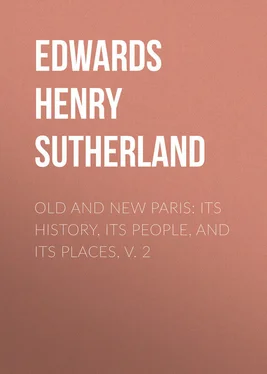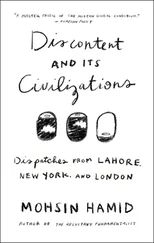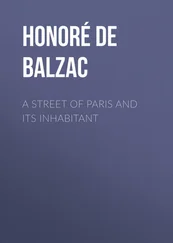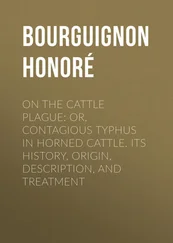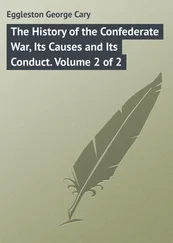Henry Edwards - Old and New Paris - Its History, Its People, and Its Places, v. 2
Здесь есть возможность читать онлайн «Henry Edwards - Old and New Paris - Its History, Its People, and Its Places, v. 2» — ознакомительный отрывок электронной книги совершенно бесплатно, а после прочтения отрывка купить полную версию. В некоторых случаях можно слушать аудио, скачать через торрент в формате fb2 и присутствует краткое содержание. Жанр: foreign_antique, foreign_prose, Путешествия и география, на английском языке. Описание произведения, (предисловие) а так же отзывы посетителей доступны на портале библиотеки ЛибКат.
- Название:Old and New Paris: Its History, Its People, and Its Places, v. 2
- Автор:
- Жанр:
- Год:неизвестен
- ISBN:нет данных
- Рейтинг книги:4 / 5. Голосов: 1
-
Избранное:Добавить в избранное
- Отзывы:
-
Ваша оценка:
- 80
- 1
- 2
- 3
- 4
- 5
Old and New Paris: Its History, Its People, and Its Places, v. 2: краткое содержание, описание и аннотация
Предлагаем к чтению аннотацию, описание, краткое содержание или предисловие (зависит от того, что написал сам автор книги «Old and New Paris: Its History, Its People, and Its Places, v. 2»). Если вы не нашли необходимую информацию о книге — напишите в комментариях, мы постараемся отыскать её.
Old and New Paris: Its History, Its People, and Its Places, v. 2 — читать онлайн ознакомительный отрывок
Ниже представлен текст книги, разбитый по страницам. Система сохранения места последней прочитанной страницы, позволяет с удобством читать онлайн бесплатно книгу «Old and New Paris: Its History, Its People, and Its Places, v. 2», без необходимости каждый раз заново искать на чём Вы остановились. Поставьте закладку, и сможете в любой момент перейти на страницу, на которой закончили чтение.
Интервал:
Закладка:
The Committee at once applied its energies to the development of the enterprise. They obtained from the Ministry permission to inspect those collections of arms which were contained in ancient royal residences, or in the mansions of great families who had become dispersed or had taken to flight. From these collections they were empowered to select whatever objects seemed eligible for exhibition in their museum. Such, however, was the resistance offered in many instances to this system of scientific plunder, that the booty carried off was not so extensive as had been anticipated.
In a more direct manner, however, the Ministry enlarged the treasures of the museum. For this purpose the First Consul, passing through Sedan in 1804, ordered that the arms he saw at the Town Hall should be transported to Paris; and this time it was necessary to obey, though the carriage of the trophies was entrusted, unfortunately, to rascals, who filched and sold part of them.
The peace of 1814 brought back to Paris the generals of artillery. The Central Committee resumed its sittings, and one of the first of these was devoted to the reorganisation of the museum, the importance of whose contents had just been revealed by a hastily-prepared inventory. The Committee appointed a commission, composed of three colonels, three chiefs of squadrons, and three captains, presided over by a general. This body had to draw up an inventory descriptive of each object, classifying the whole collection and reducing it to chronological order. The peace of 1814, however, was broken by Napoleon’s return from Elba, and the members of the commission were called away to active duty.
In 1815 the Museum of Artillery suffered nothing from the invasion: in consequence, it may be, of special measures taken beforehand for its protection. Between 1815 and 1830 the building was enlarged and a new classification was introduced. All was going well when the Artillery Museum was threatened with complete ruin. On the 28th of July, 1830, the insurgents came to the museum in search of arms; after a short but violent struggle, the doors were broken in and the place sacked. For one entire day, July 29th, the museum was almost empty, but on the morrow many of the arms seized the day before were given back, and little by little the contents of the museum, to the honour of the Parisian population, were restored. A certain number of the arms, about a hundred in all, had disappeared for ever; the loss was soon afterwards made good through the purchase of the Duke of Reggio’s collection. During the Revolution of February 7, 1848, the museum suffered no injury; a few insurgents approached the place, but were easily induced to retire.
The museum, as now constituted, fulfils the condition of its original programme, as laid down by General de Gribeauval. It contains specimens of every arm known, from the primitive flint hatchet to the weapons actually in use. It offers many gaps, entire centuries are unrepresented; but these gaps are unavoidable: they exist everywhere; and the historical character of the collection is as complete as the present condition of archaeological research permits.
The most distant period to which the history of arms can be traced is the one described by modern archæology as the Age of Stone. The use of metals was at that time unknown to man, who constructed his arms and implements out of the hardest stones he could find, the bones of animals in this primitive industry being also employed.
The researches made in different parts of France have yielded a good supply of hatchets, arrow and javelin points, made generally of flint. In the earliest period of the Stone Age the flints of the weapons were rough splints, in the second period they were polished. Among the earliest specimens of metal-work, the helmets of the ancient Etruscans may be cited, and afterwards those of the Greeks for infantry and for cavalry. In the satirical comedies of Aristophanes the price is mentioned (in the one entitled “Peace”) of the cuirasses and helmets of his time. Thus a cuirass cost ten minæ (about £35), a helmet one mina (£3 10s.). This series is continued by two Roman helmets in bronze, found at Lyons on the site of the ancient city. Among the Roman swords, some bear the mark of the place of manufacture – “Sabini.” In one of the principal cases may be seen the bronze portion of an ancient Roman standard found in Asia Minor, and given to the museum by the Emperor Napoleon III. The object is probably unique, and possesses in any case much archæological value; it is adorned with the medallions of the two emperors reigning at the time to which it belongs, and the effigies of the greater gods.
After Cæsar’s conquest, the Gauls adopted rapidly enough the manners and the arms of the Romans. At length, however, towards the end of the fifth century, the Franks appeared, and the Frankish invader brought with him his own sword and his own shield. The soldier among the Franks was buried sometimes in a sitting posture, more often stretched on his back. On the right of the sleeping warrior was his lance, with the point turned towards his head, and measuring about his own height; turned towards his feet was his battle-axe; on the left his sword – but this by exception, and only in the case of a chief. The Franks also carried small daggers with a single edge, knives, and scissors in their waist-bands. The smaller objects of equipment have been found in the graves of Frankish warriors. The Frank was armed chiefly for attack; his weapons of offence were numerous and formidable, while for the defensive he had nothing but his little shield, so small in comparison with the huge target-like arm of the fourteenth and fifteenth centuries. The chiefs alone among the Franks wore helmets.
The period of Charlemagne has been much studied, but it is difficult even now to form any idea as to the arms the emperor and his soldiers carried. The sword of Charlemagne in the Museum of Sovereigns and his spear are all, in the way of armoury, that has been preserved. If, however, we compare the sword with that of Childeric, we see many points of difference; the sword of Childeric, almost without a guard, and with a pommel of small dimensions, is very like a Roman sword. The large hemispheric pommel and the broad blade of the Emperor take us back to the mediæval types of the eleventh and twelfth centuries. As regards the successors of Charlemagne, the guards of Charles the Bald wore a uniform which closely resembled that of the Romans, with helmets of barbaric form, of which the base was very nearly square.
Now for a century and a half there is a break in the history of French weapons until we come to the Bayeux Tapestry, some time after the conquest of England by William the Norman. This celebrated piece of embroidery enlightens us as to the arms, the costume, and the equipment of armies towards the end of the eleventh century: so different from everything of the kind under Charles the Bald. In the space of about two hundred years the arms and the equipment of the soldier had undergone a complete change. A single sword is the only weapon of this epoch that the museum can offer; it is exactly like those of the Bayeux Tapestry, the point being formed not by the gradual tapering of the blade, but suddenly, by a sharpened end.
The twelfth century is represented by two helmets placed beneath glass at the end of one of the galleries; they were both found in the Somme. In the thirteenth century the man of war was usually armed with a coat of mail, but he wore a sort of hood in mail which he could throw back on his shoulders, of which an interesting specimen is to be seen at the museum.
The fourteenth century saw a transformation of the coat of mail into a suit of armour of polished steel, which, with some variations, caused by the introduction of portable fire-arms, remained the ordinary armour of the man of war until the time of its final disappearance. Towards 1325 the transformation was complete, as is proved by a great number of monuments of the time, including sculptured figures on tombs, paintings, manuscripts, sepulchral figures engraved on plates of copper, &c. These monuments and documents show that the military costume and equipment of the fourteenth century varied more than is generally imagined. Every man of war armed himself as he thought fit; but there are enough records to give an idea of the type that prevailed and even to guide the archæologist as to the dates of particular changes. What caused the ancient coat of mail to be given up was its weight, and at the same time its incompleteness for defensive purposes. It could stop the thrust of a sword and even of a lance, but in collision the effect of the shock was felt; and in adopting leather jerkins, and afterwards steel plates, the object was to spread the effect of the shock over a greater surface.
Читать дальшеИнтервал:
Закладка:
Похожие книги на «Old and New Paris: Its History, Its People, and Its Places, v. 2»
Представляем Вашему вниманию похожие книги на «Old and New Paris: Its History, Its People, and Its Places, v. 2» списком для выбора. Мы отобрали схожую по названию и смыслу литературу в надежде предоставить читателям больше вариантов отыскать новые, интересные, ещё непрочитанные произведения.
Обсуждение, отзывы о книге «Old and New Paris: Its History, Its People, and Its Places, v. 2» и просто собственные мнения читателей. Оставьте ваши комментарии, напишите, что Вы думаете о произведении, его смысле или главных героях. Укажите что конкретно понравилось, а что нет, и почему Вы так считаете.
